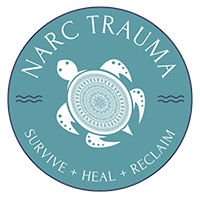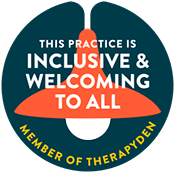Narcissistic Abuse and Coercive Control in Relationships

By Brenda Stephens, Licensed Professional Clinical Counselor
Narcissistic abuse and coercive control are critical issues affecting many relationships. Understanding these concepts is essential for recognizing unhealthy dynamics and protecting oneself from emotional harm. In this FAQ blog, we will delve into the key aspects of narcissistic abuse and coercive control, providing insights and guidance to help individuals identify and address these harmful behaviors in relationships.
What is Narcissistic Abuse?
Narcissistic abuse refers to the psychological and emotional harm that occurs when one partner in a relationship displays narcissistic traits. This can manifest in various ways, including manipulation, emotional blackmail, and a lack of empathy.
At the core of narcissistic abuse is the need for control and dominance. The abuser often prioritizes their desires over the needs of their partner, leading to a toxic environment where self-worth is eroded. This is crucial to recognize, as it lays the foundation for the patterns of abuse that can persist over time.
It’s essential to understand that narcissistic abuse can happen in any type of relationship, whether romantic, familial, or even professional. Victims may feel trapped in these dynamics, believing they are to blame for their partner’s behavior. This misbelief can hinder their ability to seek help and make sense of their experiences.
Healing from narcissistic abuse begins with recognizing it for what it is: a harmful pattern driven by a need for power. Acknowledging this can be the first step toward reclaiming one’s identity and voice in the relationship.
Understanding Coercive Control
Coercive control is the act of establishing dominance over a partner through a variety of tactics that limit their freedom and autonomy. It often includes emotional abuse, monitoring, and isolation from friends and family. The deliberate intention behind these actions is to instill fear and maintain power.
One critical aspect of coercive control is the gradual erosion of a partner’s self-esteem. Over time, victims may become so accustomed to the controlling behaviors that they begin to doubt their decisions, worth, and perceptions of reality. This manipulation can make it extremely difficult for the victim to escape the cycle.
Furthermore, coercive control is often camouflaged as concern or love. The abuser may frame controlling actions as protective behaviors, pushing the victim to believe that escaping the relationship would be dangerous. This psychological twist makes it even more challenging for victims to recognize the abuse.
Because coercive control is multifaceted and often insidious, awareness is vital. It is crucial for individuals to educate themselves about these behaviors, as recognizing them can be empowering and, ultimately, life-saving.
Signs of Narcissistic Abuse
Identifying the signs of narcissistic abuse can be pivotal in breaking the cycle. Key indicators include frequent gaslighting, where the abuser manipulates the victim’s perception of reality, making them question their own memories and sanity.
Another common sign is the constant need for validation from the abuser, leading to an imbalance in the relationship. Victims often find themselves walking on eggshells to appease their partner, fearing their reaction to any perceived wrongdoing.
Moreover, emotional neglect is prevalent in narcissistic relationships. The abuser might dismiss the victim’s emotions as unimportant, further isolating them and reinforcing feelings of worthlessness. Recognizing these emotional signs is critical for anyone who may be experiencing such abuse.
Lastly, withdrawal from friends and family can point to a controlling environment at home. Narcissistic abusers often cultivate loneliness to maintain power, so if you notice yourself pulling away from loved ones, it’s worth examining the underlying dynamics.
Effects of Coercive Control on Victims
Victims of coercive control can experience a range of emotional and psychological effects. The continuous manipulation and isolation can lead to anxiety, depression, and a pervasive sense of hopelessness. Many victims report feeling trapped and unable to envision a way out.
Additionally, the long-term effects can disrupt critical aspects of daily life. Relationships with friends and family may deteriorate, as victims often distance themselves from those who could offer support. This isolation can perpetuate the cycle of abuse, reinforcing the abuser’s control.
Furthermore, victims may struggle with trust issues, impacting future relationships. The scars left by coercive control can linger, creating barriers to intimacy and vulnerability. Healing is a gradual process, requiring time and support.
Ultimately, acknowledging these effects is an essential step toward recovery. Understanding the profound impact of coercive control helps empower victims to seek the counsel they need to rebuild their lives.
How to Break Free from Narcissistic Relationships
Breaking free from a narcissistic relationship often feels daunting, yet it is an essential step toward reclaiming your life. The first step is recognizing and acknowledging the abuse you’ve endured, understanding that you deserve better.
Creating a robust support system can significantly aid in your journey to freedom. Reach out to trusted friends, family, or support groups that understand the nuances of narcissistic abuse. They can provide encouragement and validation during critical moments.
Setting clear boundaries is also crucial. This may involve clearly communicating your needs to the abuser or distancing yourself physically and emotionally. Remember, boundaries are not just healthy; they are necessary for your emotional wellbeing.
Finally, consider professional help. Therapy can be a transformative process that helps you address the trauma and develop coping strategies. Professionals experienced in trauma and abuse can offer insights that will support your healing journey.
Finding Support and Resources
Finding support is crucial when navigating the challenges of narcissistic abuse and coercive control. Numerous resources, including hotlines, support groups, and therapists specialize in helping victims heal and regain their autonomy.
Online communities can also serve as a vast support network. Many websites offer forums where survivors share their stories and coping strategies. Engaging with others who have faced similar experiences can foster empowerment and provide invaluable insights.
Books and articles on overcoming narcissistic abuse can offer guidance and tools for understanding your situation. Knowledge is a powerful ally in your journey to healing, helping you identify red flags and set boundaries.
In conclusion, taking the step to seek support is courageous and vital. By reaching out and utilizing the available resources, you can embark on a path toward recovery and self-empowerment, ultimately leading to healthier relationships in the future.
Final Thoughts on Navigating Narcissistic Abuse and Coercive Control
By raising awareness about narcissistic abuse and coercive control, we can empower individuals to recognize unhealthy patterns in their relationships. Seeking help and support from professionals or support groups can be essential steps in healing and reclaiming one’s life. Remember, no one deserves to be controlled or manipulated.







